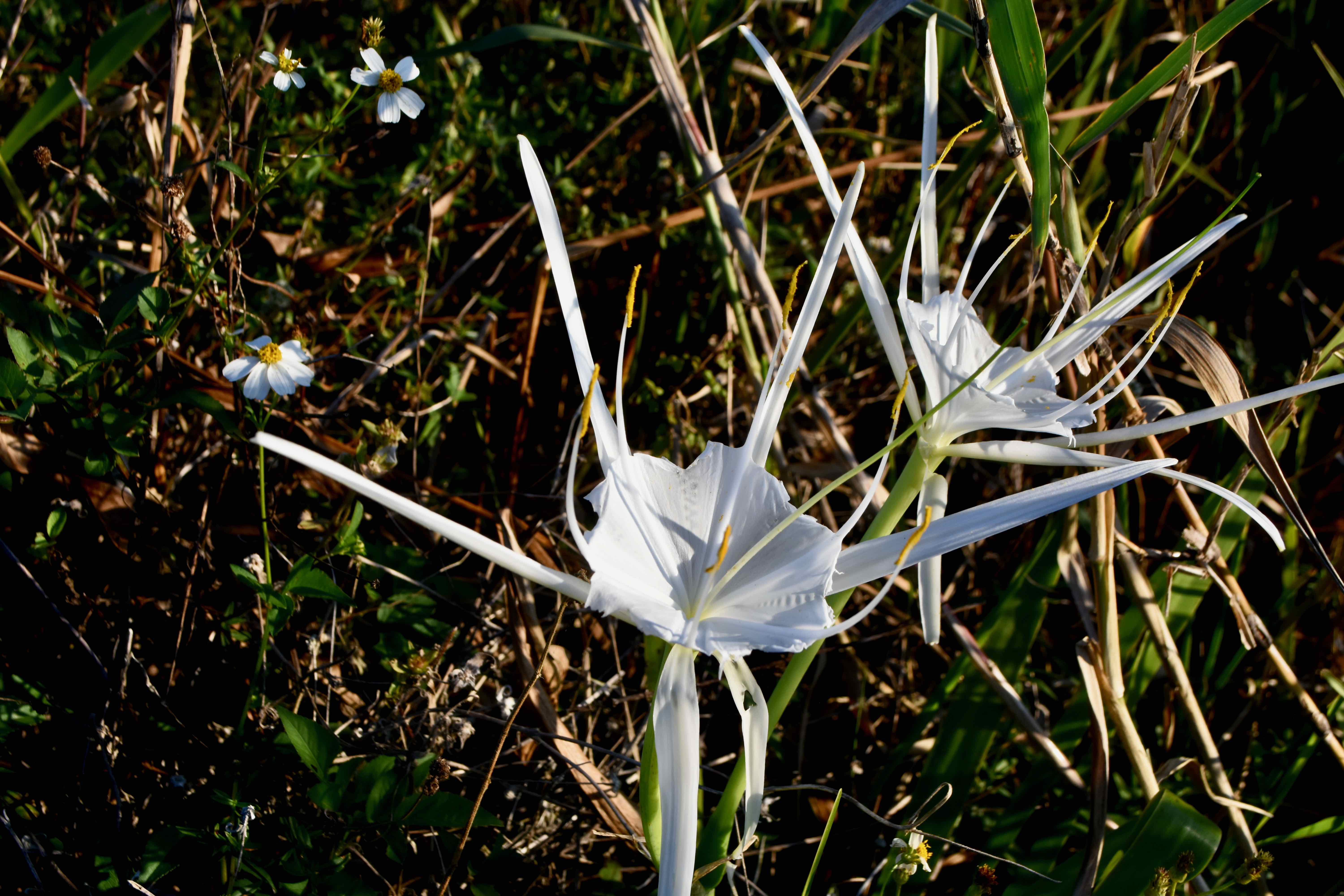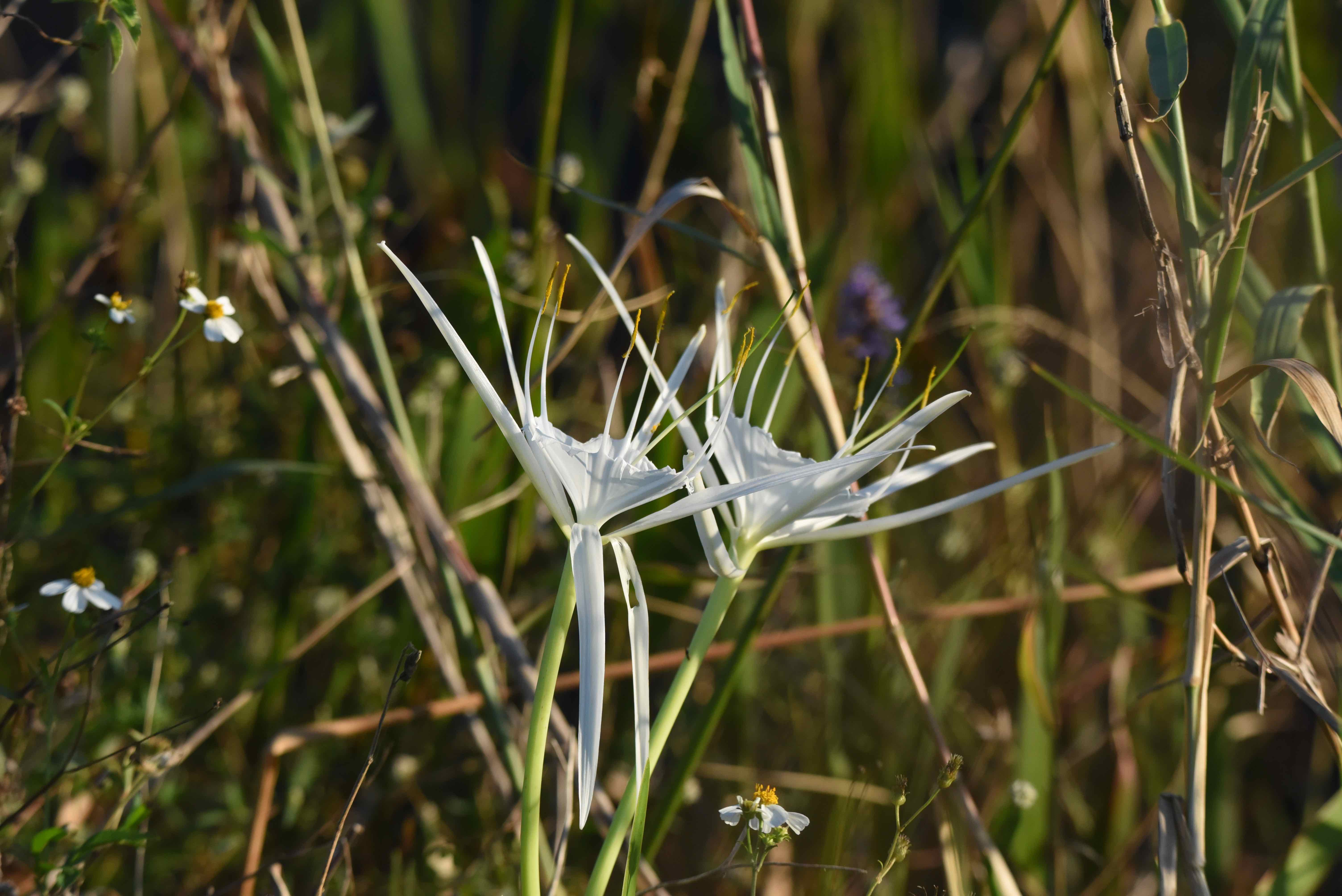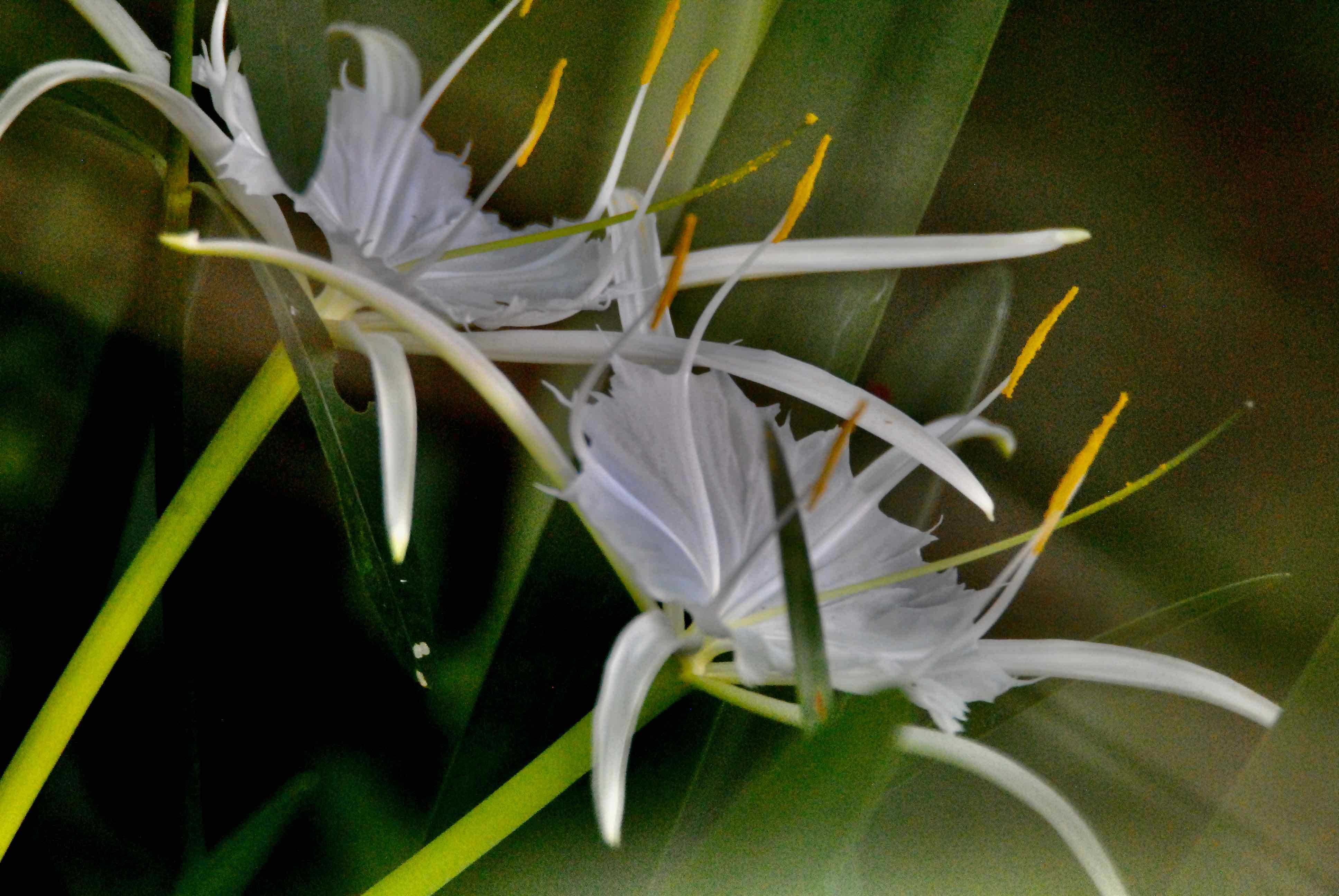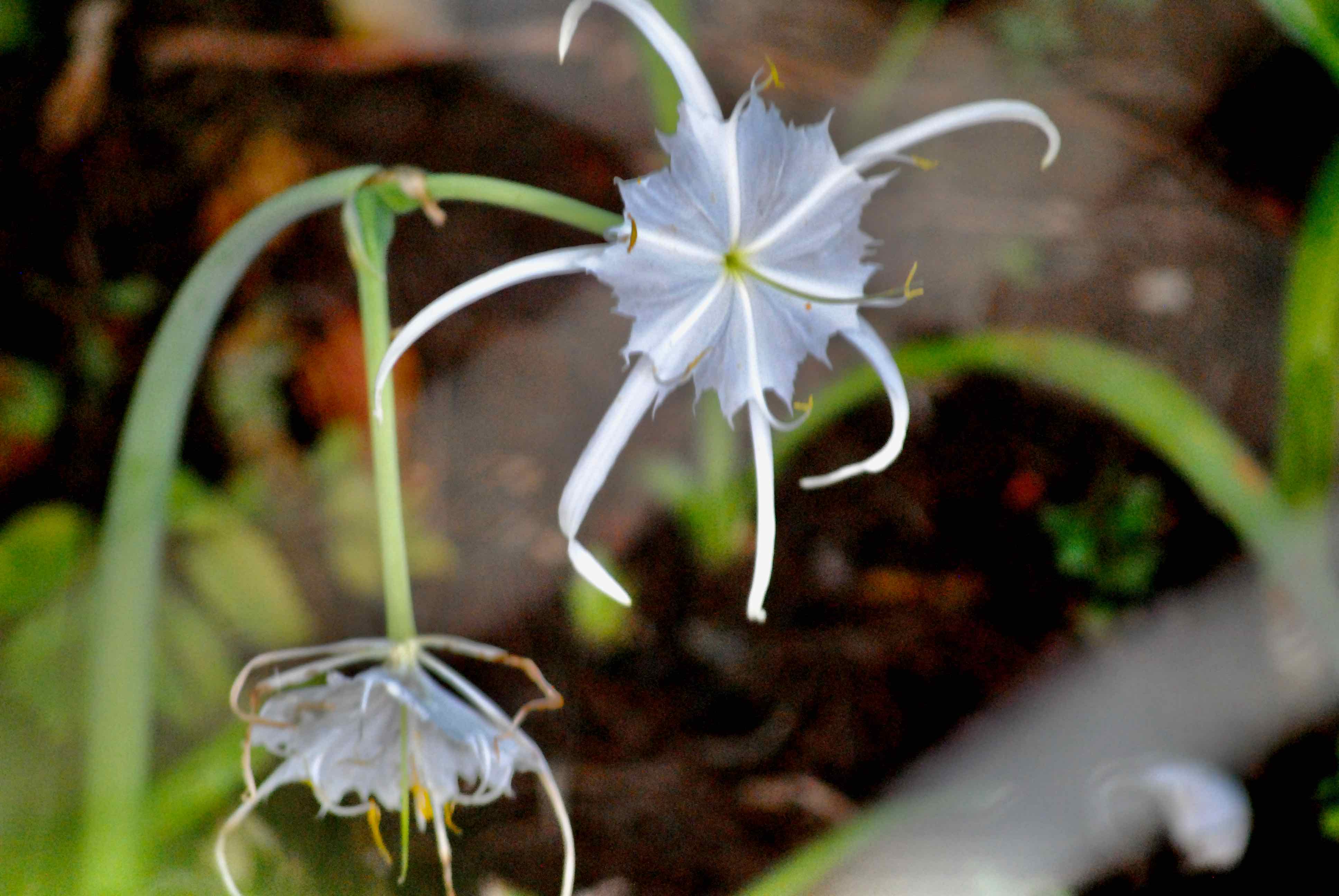
Florida spider lily, photographed at Loxahatchee National Wildlife Refuge, Boynton Beach, Palm Beach County, in January 2020.
Like a rose, a spider lily by any other name is still a spider lily, to borrow a phrase from Mr. Shakespeare. But as all roses are not alike neither are all spider lilies.
Thing is, with spider lilies, the differences can be subtle, and it's easy to overlook the details that separate one species from another and simply enjoy their beauty.
There are actually about 40 species of spider lillies in the New World, inhabiting temperate, subtropical and tropical places. Of these 40, 13 are found in the Sunshine State. Florida spider lily, or if you prefer, spiderlily, is one of them, albeit a rare one. Scientifically, it's known as Hymenocalis tridenta. The alligator lily, Hymenocalis palmeri, probably is the most common spider lily found in our region.
So what's the difference between the two? The easiest tell is the number of flowers per scape, or flower stalk. The alligator lily has one per scape; Florida spider lily will have two. The tepals — those long, ribbon-like structures that extend outward from below the membrane — are white on our guy, noticiably more greenish white on alligator lily. The leaves on alligator lily are also shorter than those of Florida spider lily. Alligator lily is also found as far north as South Carolina and Georgia, while our guy is endemic to Florida, meaning its found here and nowhere else on the planet. The Institute for Regional Conservation considers Florida spider lily to be imperiled in South Florida. Oh and one more note: there is another spider lily species that's fairly common: mangrove spider lily, which has nine to 15 flowers per scape, It's often found in beach dunes.
Some spider lily basics: all species grow from a large, onion-like bulb from which two ranks of long, fleshy, strap-like leaves emerge. The plant produces a leafless stalk called a scape from which flowers will bloom. As noted above, the number of flowers is one key identifier. At the center of the flower is a large, delicate looking membrane called a staminal cup. It's really the signature feature of the genus. They also have six long, narrow ribbon-like extensions called tepals (petals and stepals) that go beyon the staminal cup. Some spider lilies have underground stems called rhizomes that help the plant spread out and form clumps.
Our guy, Florida spider lily can reach two to three feet in height; it flowers mostly in April and May. Favorite habitats include ditches, marshes and wet prairies. It grows in full sun and part shade. Different sources show different ranges within Florida, but generally it's found from Volusia and Indian River counties south to the Keys along the Atlantic seaboard, in Charlotte and Lee counties along the Gulf and inland in the counties west of Lake Okeechobee. The Institute for Regional Conservation notes that Florida spider lily might be more widespread than recorded because of its similarity to Alligator lily.
Florida spider lily is a member of a member of Amarylilidaceae, the lily family, which also includes tulips, onions and asparagus. Other common names we've seen include Traib's spider lily; we've seen one reference to it as Peruvian daffodil.
Click on photo for larger image
Links for Florida Spider Lily



